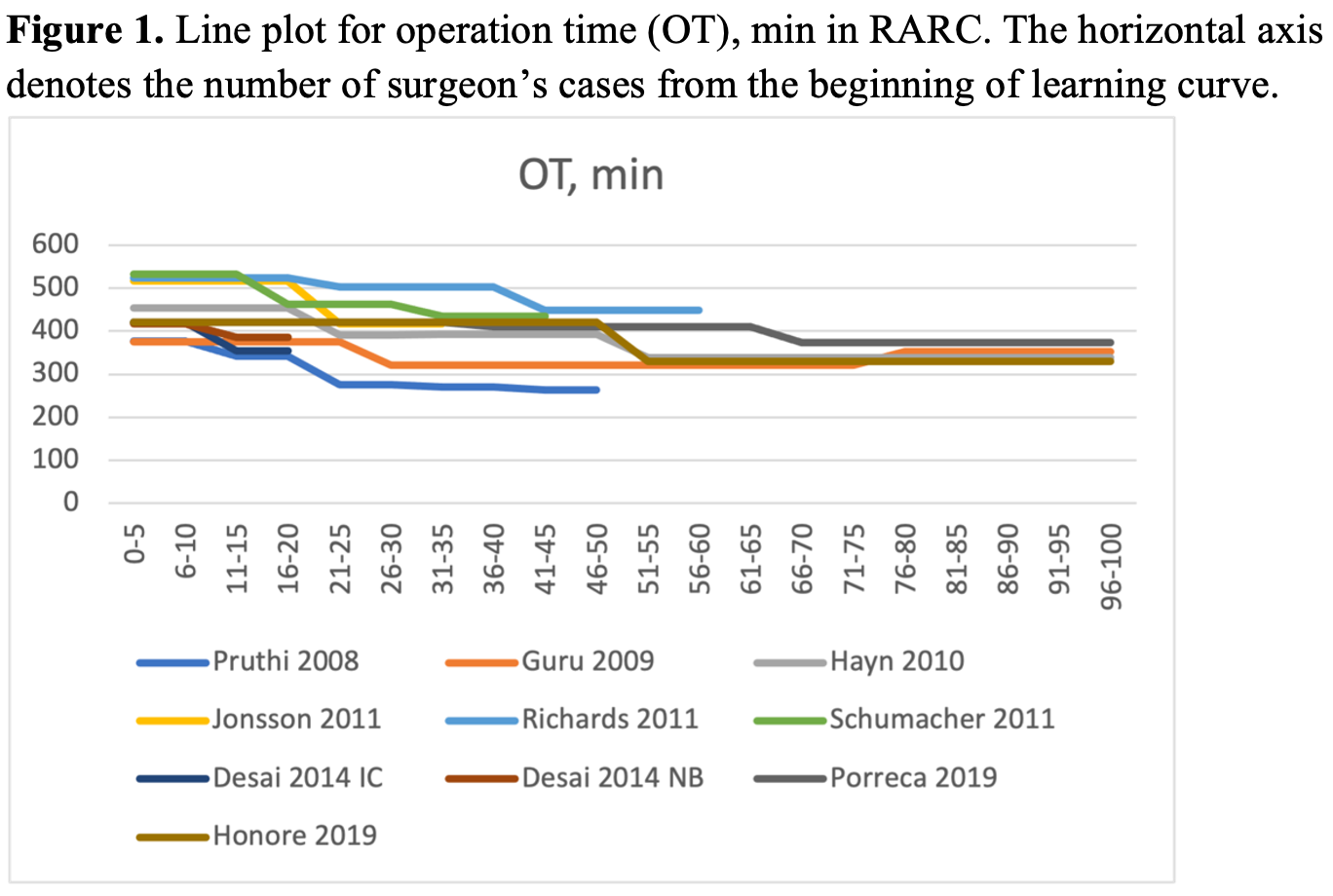Back
Poster, Podium & Video Sessions
Moderated Poster
MP19: Education Research II
MP19-12: The learning curve for robot-assisted radical cystectomy: a systematic review
Saturday, May 14, 2022
7:00 AM – 8:15 AM
Location: Room 228
Andrey Morozov*, Diana Babaevskaya, Mark Taratkin, Jasur Inoyatov, Ekaterina Laukhtina, Moscow, Russian Federation, Marco Moschini, Milan, Italy, Nirmish Singla, Baltimore, MD, Juan Gomez Rivas, Madrid, Spain, Jeremy Teoh, Hong Kong, China, People's Republic of, Petr Glybochko, Dmitry Enikeev, Moscow, Russian Federation
- AM
Poster Presenter(s)
Introduction: The aim of this systematic review is to assess the robot-assisted radical cystectomy (RARC) learning curve (LC), which is important to consider in both risk-benefit assessment and training.
Methods: We performed a systematic literature search using 2 databases (Medline and Scopus) and included all articles containing data on the assessment of the RARC LC. The detailed search strategy and review protocol have been published in PROSPERO (CRD42021228425). The scope of the review according to the PICOS process is as follows: P – patients with bladder cancer; I – RARC; C – operation time (OT), blood loss and outcomes of the procedure depending on surgical experience; O – learning curve; S – all types of studies (both prospective and retrospective).
Primary outcome was the surgeons’ experience (a number of performed procedures) required to reach the LC plateau. Secondary outcomes concerned the methods for assessing the relevant LC. The risk of bias was assessed using the ROBINS-I tool.
Results: Based on PRISMA statement, a total of 406 articles were identified; after review 17 studies were left for analysis. Between 9 and 50 procedures were required to reduce the operation time significantly (Figure 1). The data on estimated blood loss during RARC is somewhat controversial. In order to optimize the lymph node yield, it was necessary to treat between 20 and 50 patients. The LC for positive surgical margin was only described in one study, it was completed after 24 – 30 cases. Between 10 and 15 cases were necessary to reduce length of stay. Complications became less frequent after 10 to 75 patients but there was no clear plateau in the figures.
Conclusions: Based on the relevant assessment criteria, the RARC learning curve length varies from 10 to 50 cases. The most common criteria for evaluating the learning experience include operation time and the lymph node yield. Blood loss, length of hospital stay and complication rates show variable outcomes and may be harder to use systematically as a means of learning curve assessment.
Source of Funding: None

Methods: We performed a systematic literature search using 2 databases (Medline and Scopus) and included all articles containing data on the assessment of the RARC LC. The detailed search strategy and review protocol have been published in PROSPERO (CRD42021228425). The scope of the review according to the PICOS process is as follows: P – patients with bladder cancer; I – RARC; C – operation time (OT), blood loss and outcomes of the procedure depending on surgical experience; O – learning curve; S – all types of studies (both prospective and retrospective).
Primary outcome was the surgeons’ experience (a number of performed procedures) required to reach the LC plateau. Secondary outcomes concerned the methods for assessing the relevant LC. The risk of bias was assessed using the ROBINS-I tool.
Results: Based on PRISMA statement, a total of 406 articles were identified; after review 17 studies were left for analysis. Between 9 and 50 procedures were required to reduce the operation time significantly (Figure 1). The data on estimated blood loss during RARC is somewhat controversial. In order to optimize the lymph node yield, it was necessary to treat between 20 and 50 patients. The LC for positive surgical margin was only described in one study, it was completed after 24 – 30 cases. Between 10 and 15 cases were necessary to reduce length of stay. Complications became less frequent after 10 to 75 patients but there was no clear plateau in the figures.
Conclusions: Based on the relevant assessment criteria, the RARC learning curve length varies from 10 to 50 cases. The most common criteria for evaluating the learning experience include operation time and the lymph node yield. Blood loss, length of hospital stay and complication rates show variable outcomes and may be harder to use systematically as a means of learning curve assessment.
Source of Funding: None


.jpg)
.jpg)